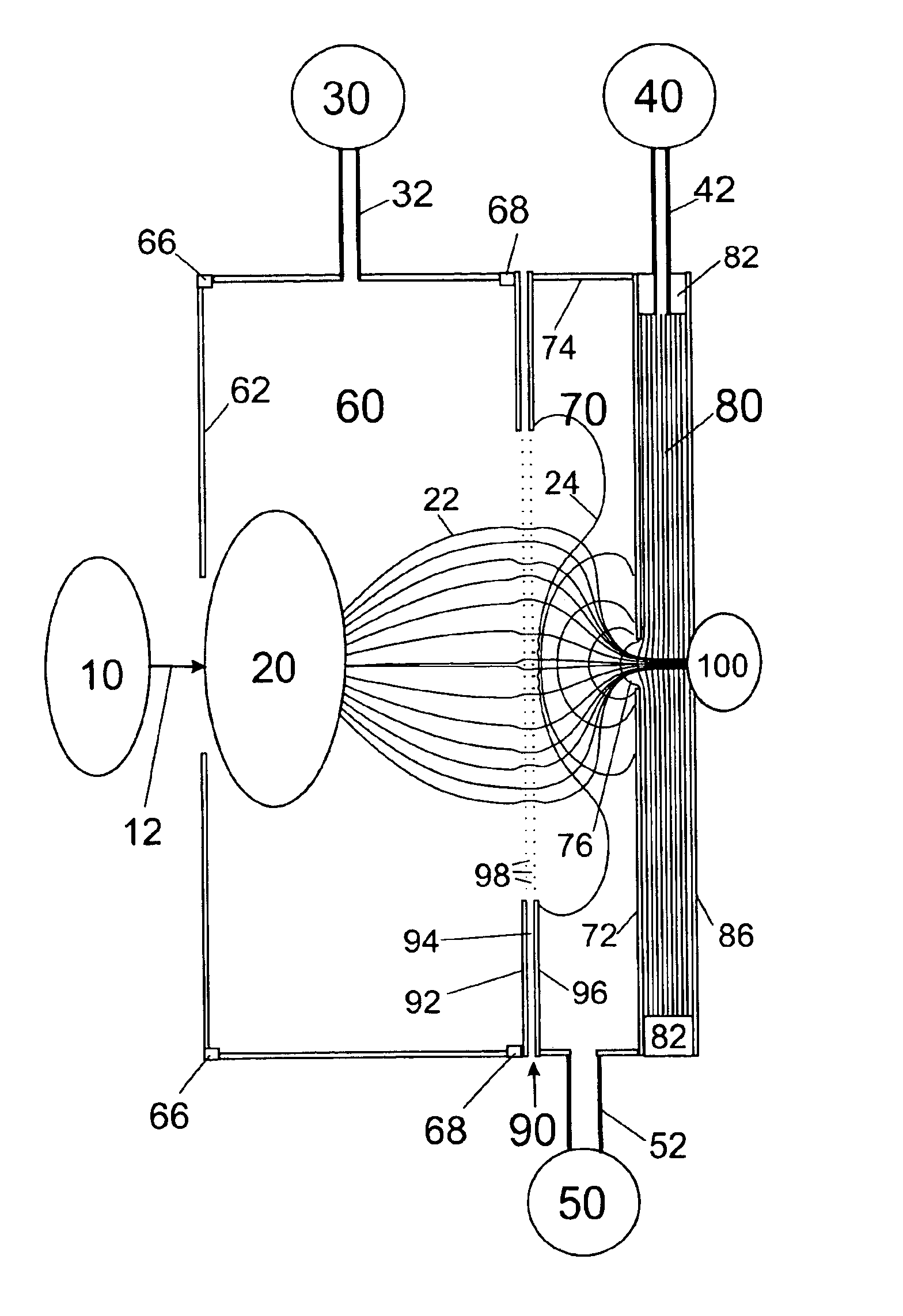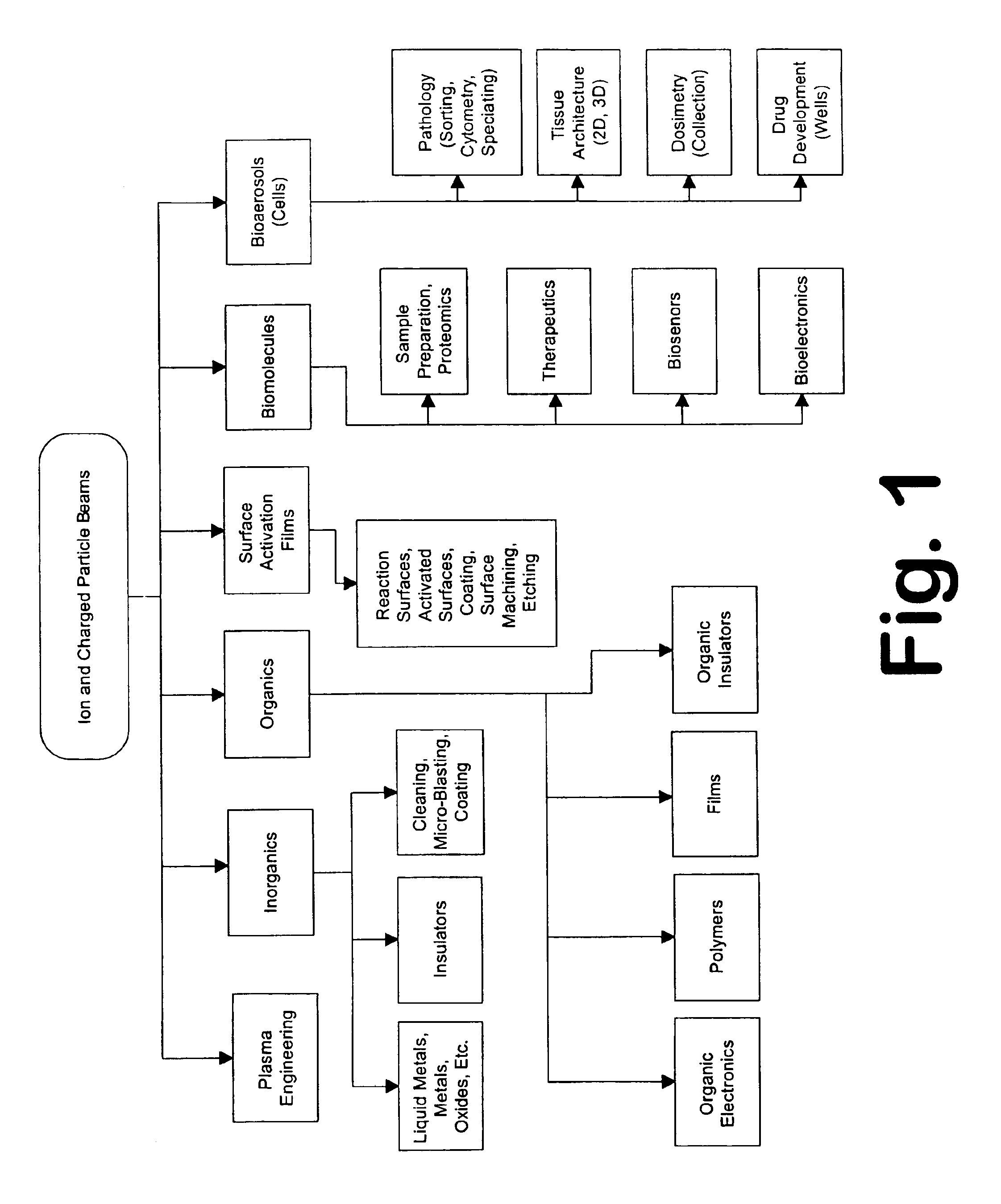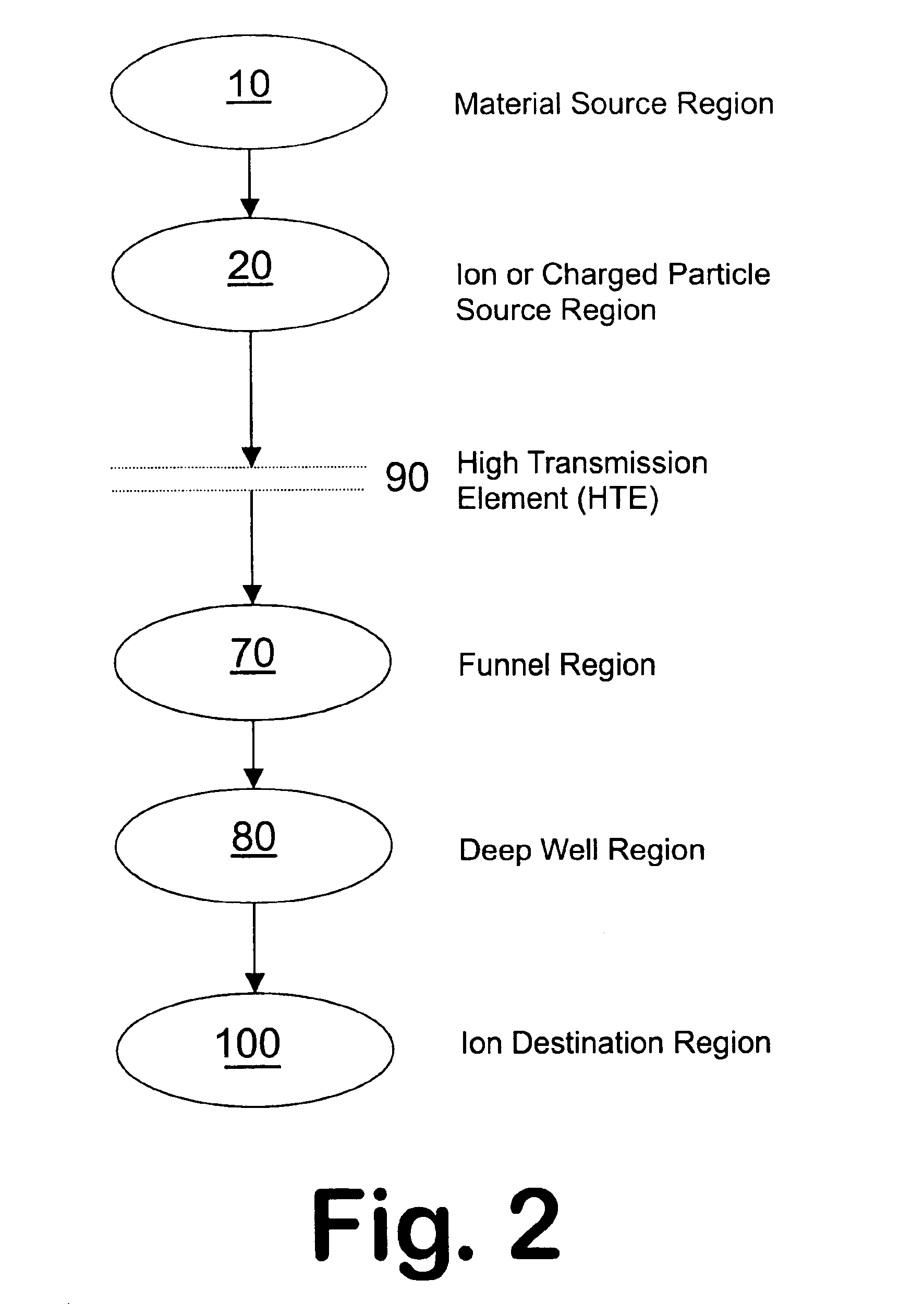Ion and charged particle source for production of thin films
- Summary
- Abstract
- Description
- Claims
- Application Information
AI Technical Summary
Benefits of technology
Problems solved by technology
Method used
Image
Examples
Embodiment Construction
—GENERAL
The present invention describes a variety of electro-optical devices and the associated methods of delivering materials to a target surface with precise control over position, composition, and time of deposition. The invention is constructed as to provide both a continuous, or discontinuous supply of ions or charged particles for deposition in desired patterns onto target surfaces. The lens elements may be constructed of predetermined mask patterns of composite construction in 3-dimensional conformations to yield maximum ion directing efficiency and fine directed beam resolution for fine resolution patterning of materials. Alternately, the lens may be a simple, non-conformal 2-dimensional or 3-dimensional shadow mask that imparts its pattern upon the directed, collimated ion beam to yield a structured pattern of deposits toward the substrate. Lastly, the ion stream may be controlled by a lens element array (2-dimensional or 3-dimensional conformal architecture) constructed f...
PUM
 Login to View More
Login to View More Abstract
Description
Claims
Application Information
 Login to View More
Login to View More - R&D
- Intellectual Property
- Life Sciences
- Materials
- Tech Scout
- Unparalleled Data Quality
- Higher Quality Content
- 60% Fewer Hallucinations
Browse by: Latest US Patents, China's latest patents, Technical Efficacy Thesaurus, Application Domain, Technology Topic, Popular Technical Reports.
© 2025 PatSnap. All rights reserved.Legal|Privacy policy|Modern Slavery Act Transparency Statement|Sitemap|About US| Contact US: help@patsnap.com



